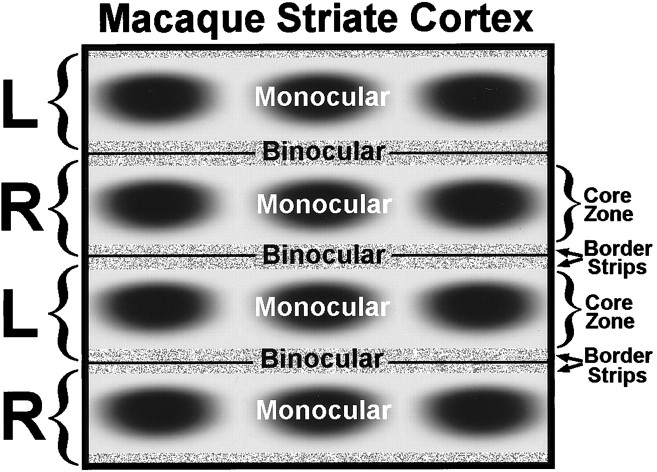Fig. 1.
Schematic diagram of macaque striate cortex, drawn as if one were looking down through the cortical layers from the pial surface. On the left, brackets mark the actual boundaries of the ocular dominance columns in layer IVc (L, = left; R = right). Each ocular dominance column contains a central, monocular core zone, with a row of CO patches (also known as “blobs” or “puffs”) running down the middle. The CO patches are visible in all layers except IVc and IVa. Each monocular core zone is flanked by a thin binocular border strip. The border strips at the boundaries between ocular dominance columns create a single binocular region. Therefore, the existence of core zones and border strips gives rise to a regular system of alternating monocular and binocular compartments in striate cortex, at least within the representation of the central 12° (beyond this eccentricity, the ocular dominance columns serving the ipsilateral eye become fragmented, and binocular function is reduced). Although sharp boundaries are shown, the transition between core zones and border strips is gradual. Our goal in this study was to test the effects of strabismus on CO activity in the core zones and the border strips serving each eye.

